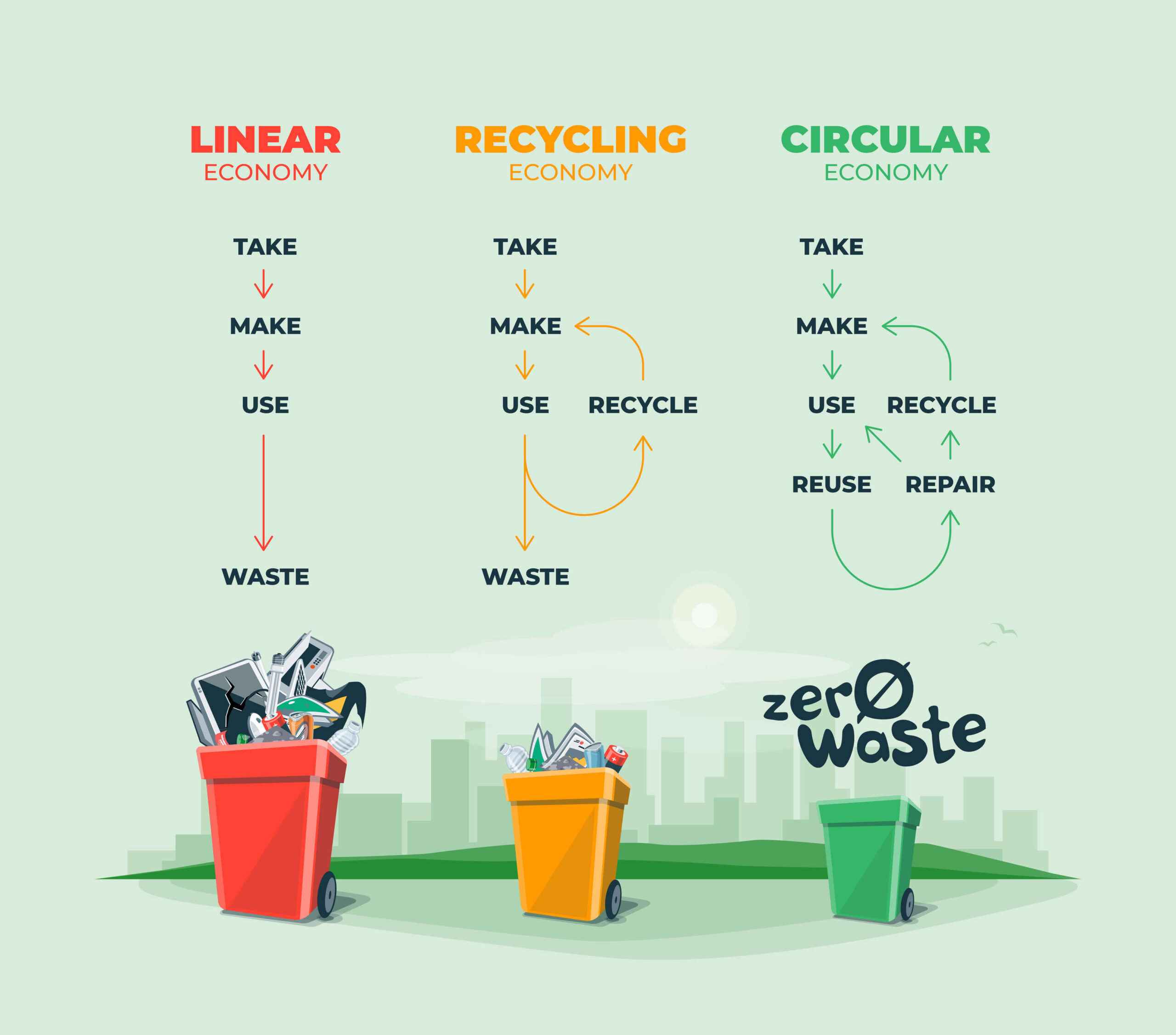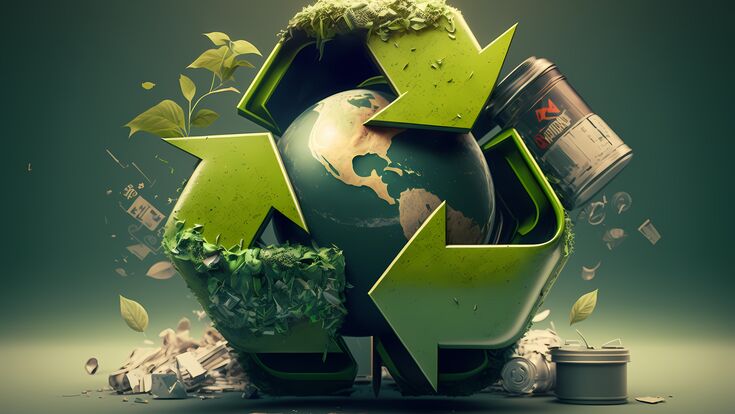Discover the Benefits of Recycling Lives Services for Your Company
Discover the Benefits of Recycling Lives Services for Your Company
Blog Article
Understanding the Classification and Handling of Different Kinds Of Waste
Effective waste monitoring is essential for environmental sustainability, requiring a thorough understanding of the classification and handling of various waste kinds. Family waste, industrial byproducts, harmful materials, digital refuse, and natural remnants each demand unique protocols to make certain security and minimize eco-friendly damage.
Family Waste
Household waste, including a wide range of disposed of products generated from everyday living tasks, represents a considerable part of the overall waste stream - recycling lives services. This classification consists of organic waste such as food scraps, backyard clippings, and paper products, together with not natural products like plastics, metals, and glass. The diverse nature of family waste demands effective classification and administration to minimize ecological impact and promote sustainable living methods
Effective house waste administration begins with partition at the source, facilitating recycling, composting, and secure disposal. Organic waste, for example, can be composted to produce nutrient-rich dirt amendments, lowering garbage dump burden and boosting soil wellness. Recyclable materials, consisting of paper, glass, and specific plastics, can be refined and repurposed, saving resources and lowering energy intake connected with new product production.
Moreover, harmful home waste such as batteries, electronic devices, and cleansing chemicals calls for specialized dealing with to stop dirt and water contamination. Public understanding projects and convenient disposal options play critical duties in making sure appropriate disposal and recycling of these materials. By implementing durable waste reduction strategies and cultivating neighborhood participation, districts can significantly alleviate the ecological impact of house waste.
Hazardous Waste
Industrial waste, a significant contributor to worldwide waste generation, encompasses a diverse range of products generated by production, building, and other industrial activities. Reliable monitoring of commercial waste is vital for lessening environmental impact and advertising lasting methods.
The handling of industrial waste generally entails a number of procedures: collection, disposal, therapy, and segregation. Collection systems are created to successfully gather waste products from various resources within a commercial operation.
Taking on strategies such as waste reduction, source recovery, and recycling can dramatically decrease the burden of hazardous waste on the environment, adding to even more lasting industrial methods.
Contaminated Materials

The category of contaminated materials is normally based on its physical and chemical characteristics. Poisonous wastes consist of damaging substances that can create negative health results also at low focus. Harsh wastes can damage or destroy living materials and cells. Flammable wastes can quickly ignite, posturing fire risks, while reactive wastes can create explosions or launch hazardous gases upon contact with other materials.
Reliable contaminated materials monitoring entails a number of vital methods: recognition and segregation of unsafe materials, secure transport and storage, and ideal treatment and disposal. Therapy approaches may consist of chemical incineration, stabilization, and neutralization. Governing compliance is crucial, directed by structures such as the Source Conservation and Recuperation Act (RCRA) in the USA, which guarantees risk-free and environmentally audio management of harmful waste.
Digital Waste
Digital waste, often abbreviated as e-waste, represents a growing obstacle in waste monitoring as a result of the rapid obsolescence of innovation. This classification encompasses a wide series of disposed of electronic tools, including smart devices, redirected here computers, televisions, and household home appliances. The complexity of e-waste depends on its make-up; these items have a mix of valuable materials such as gold and copper, in addition to harmful materials like lead, cadmium, and mercury.

Regulations and laws, such as the European Union's Waste Electrical and Digital Equipment (WEEE) Instruction, objective to advertise responsible e-waste monitoring. These policies mandate makers to facilitate the collection and recycling of digital products, consequently decreasing the burden on land fills and minimizing ecological contamination.
Organic Waste
Organic waste, encompassing naturally degradable materials such as food scraps, lawn trimmings, and farming residues, comprises a significant section of the municipal strong waste stream. This sort of waste is noteworthy not just for its quantity however also for its prospective environmental look here influence if not managed appropriately. Organic waste can disintegrate anaerobically in landfills, creating methane, a powerful greenhouse gas contributing to climate modification.
Correct handling of organic waste entails several methods. Composting is a widely taken on method, transforming organic materials into useful compost that can improve soil and support sustainable farming. This process likewise reduces the volume of waste sent out to land fills. One more strategy is anaerobic digestion, which breaks down natural matter in the absence of oxygen, creating biogas that can be used as a renewable resource source. In addition, diverting food waste from garbage dumps via donation programs can ease food instability while reducing waste.
Municipalities and services are significantly recognizing the importance of organic waste administration. Carrying out thorough natural waste reusing programs not just mitigates environmental impacts but also lines up with wider sustainability goals, promoting a circular economic climate where sources are consistently recycled and repurposed.
Verdict
Reliable waste monitoring and environmental management demand a comprehensive understanding of the category and handling of numerous waste kinds. House, commercial, harmful, electronic, and organic waste each need unique procedures for therapy, disposal, and partition. Correct monitoring decreases ecological effect, saves resources, and promotes sustainability. Executing proper techniques for every waste kind guarantees secure and responsible waste address monitoring methods, eventually contributing to the protection of environments and public wellness.
Reliable waste monitoring is crucial for environmental sustainability, needing a thorough understanding of the category and handling of various waste kinds.Household waste, including a wide selection of discarded materials created from day-to-day living activities, represents a substantial part of the overall waste stream.Industrial waste, a major contributor to worldwide waste generation, incorporates a varied range of materials created by production, building and construction, and various other industrial activities (recycling lives services).Dangerous waste, a critical issue in waste administration, makes up products that present substantial threats to human wellness and the setting due to their toxic, corrosive, flammable, or responsive residential properties.Organic waste, incorporating eco-friendly products such as food scraps, backyard trimmings, and farming deposits, makes up a considerable part of the community solid waste stream
Report this page